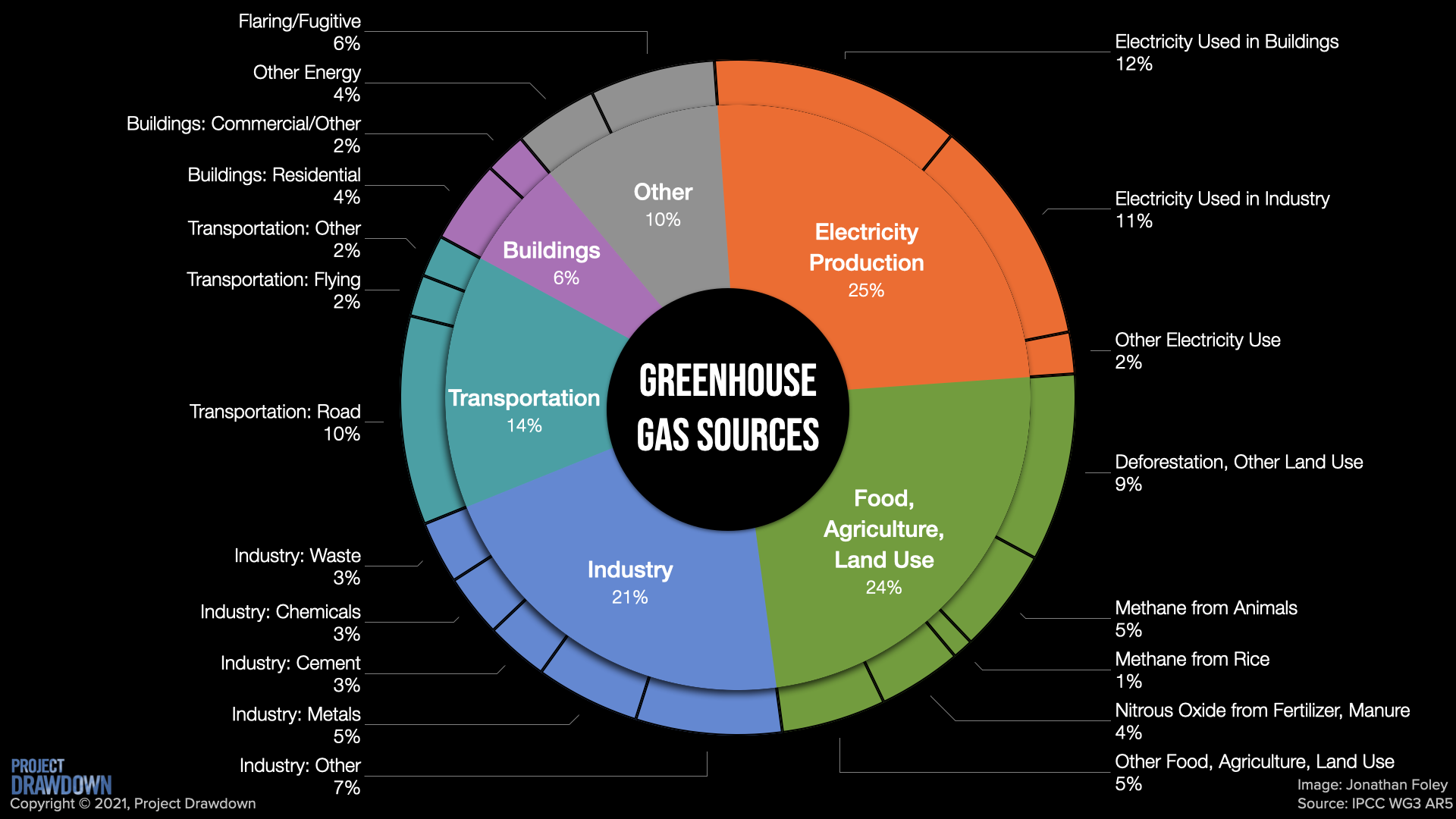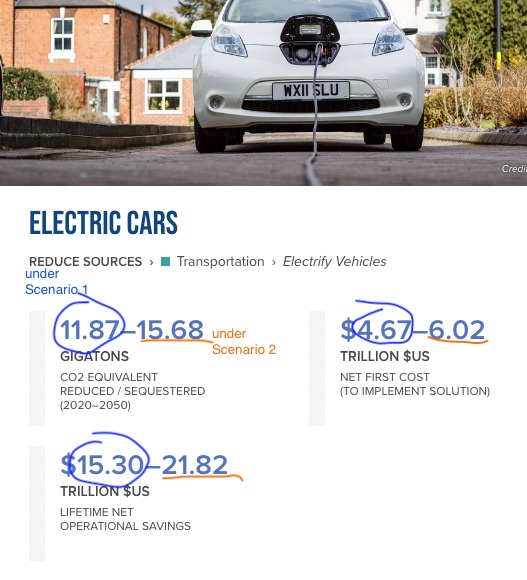Project Drawdown
Drawdown is...

Project Drawdown is a non-profit organization, carrying out research:
Project Drawdown’s research program seeks to determine whether reaching Drawdown is possible, using existing and well-proven climate solutions.[My emphasis above.] Drawdown's perspective is to identify solutions that already exist (e.g. not rely on far off technologies such as nuclear fusion), and make well-grounded estimates of costs, economic benefits, and climate benefits ($CO_2$ (equivalent) reductions).
Drawdown Research, drawdown.org
Framework and lingo
Read about the Drawdown framework.
Project Drawdown lingo: We talk about carbon-dioxide (equivalent)...
- sources, emitting $CO_2$ into the atmosphere and
- "sinks", which absorb (take out) $CO_2$ from the atmosphere.


Assignment: Investigate 2 solutions
The purpose of this assignment is partly to get you acquainted with some of the many ways we could address climate change, and partly to start you thinking about a topic you might want to investigate for your semester paper in our class.
Solutions
Each solution contains estimates of costs and emissions reductions. These estimates are made under 2 possible drawdown scenarios.
Project Drawdown uses different scenarios to assess what determined, global efforts to address climate change might look like. Both scenarios shown here are plausible and economically realistic. Drawdown Scenario 1 is roughly in line with 2˚C temperature rise by 2100, while Drawdown Scenario 2 is roughly in-line with 1.5˚C temperature rise at century’s end.
-from their Table of Solutions

If the Net first cost is negative, that means that it would actually save money up front compared to what we're currently doing.
The current Drawdown website has their most recent estimates of costs and benefits for solution. But I find that it does not have as much background information about the solutions as the previous version of the website. So here is the Drawdown website as it appeared in December of 2019:
tiny.cc/drawdown2019 (by way of the Internet Archive)
Using the 2019 version of the website as a starting point, browse the table of solutions at the link above. Eventually, settle on two solutions that interest you, to research further. For each of those two solutions, research and write:
- Click the link, and read the summary of the solution, and click on the "resources" link to open up some more detail on the solution and read that too. Pay close attention to the "lingo" or specialized terms that you find there. These will help you formulate search terms to use, to find out more information.
- Write up a short bulleted list, summarizing the information you've read about the solution on the (2019) drawdown website.
- Write a few sentences about why you choose this particular solution and what you find interesting about this solution.
- Search for and find two articles which describe some attempt at trying out this kind of solution. At least one should describe such an attempt in a country other than the U.S. Write up a short, bulleted list summary of each article's most important points.
- Write up a few sentences about: What questions does this raise for you about this particular solution?